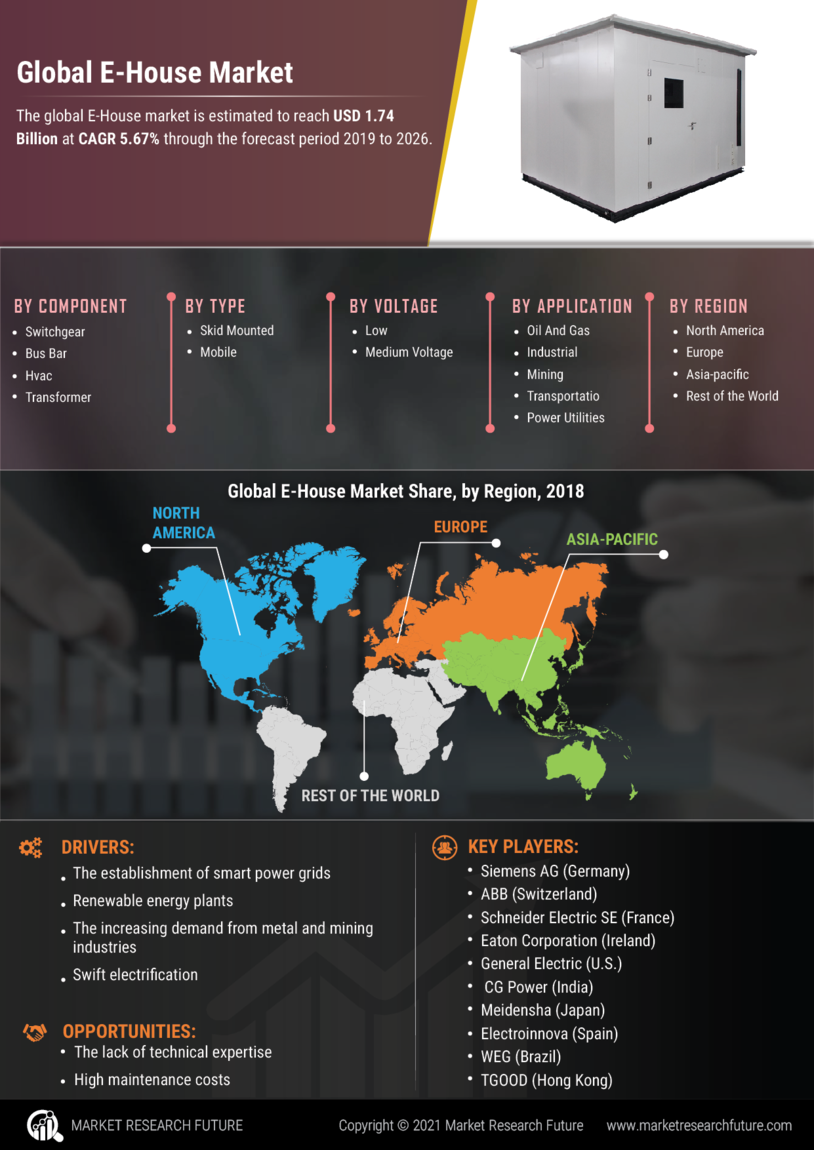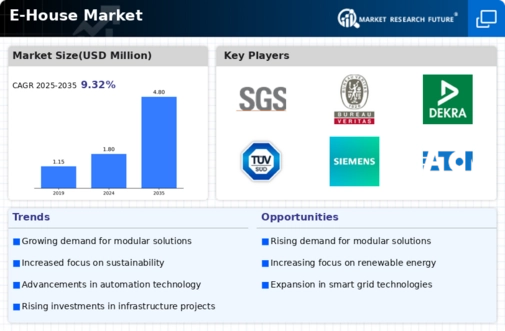By Region, the study provides market insights into North America, Europe, Asia-Pacific, and the Rest of the World. The Asia Pacific E-House market accounted for ~39% in 2022. The Asia-Pacific region has been experiencing significant growth in the e-house market due to rapid industrialization, urbanization, and infrastructural development. The power infrastructure is growing in the Asia-Pacific region owing to several reasons. The region is experiencing rapid economic growth, which has led to an increase in demand for electricity.
Additionally, the growing population is contributing to the increasing demand for electricity. According to the Worldometer data for 2023, Asia and the Pacific combined has more than 4.78 billion population. Another factor that is supporting the region’s market growth is increasing industrial activities. For instance, the National Bureau of Statistics of China reported that industrial production in China grew by 8.3% year-on-year in August 2021.
FIGURE 3: E-HOUSE MARKET SIZE BY REGION 2022 VS 2032

Source: Secondary Research, Primary Research, MRFR Database, and Analyst Review
Further, the major countries studied in the market report are the U.S., Canada, Germany, France, the UK, Italy, Spain, China, Japan, India, Australia, South Korea, and Brazil.
North America market accounts for the second-largest market share. The e-house market in North America has been experiencing significant growth in recent years, driven by factors such as technological advancements, increasing demand for efficient power distribution systems, and government initiatives to promote renewable energy sources. The United States is one of the largest market for e-houses in North America, with several key players such as ABB, Siemens, and Schneider Electric dominating the market. The country has been observing the increased demand for e-houses due to its vast energy infrastructure, particularly in the renewable energy sector. For instance, in January 2024.
US government allocated $4.9 billion for 37 infrastructure projects, emphasizing Mega and INFRA grants. Focus on large transformative endeavors, including bridge replacements. Funding oversubscribed, next application period in mid-2024. The US government have also implemented schemes such as the Investment Tax Credit (ITC) and Production Tax Credit (PTC) to promote solar and wind energy, respectively.
The Europe E-House Market is expected to grow at the fastest CAGR between 2022 and 2032. The E-house market in Europe is witnessing robust growth, driven by the region's commitment to transitioning towards sustainable and renewable energy sources. For instance, According to International Energy Agency, in May 2022 the European Commission proposed to increase the European Union’s renewable energy target for 2030 to 45% as part of the REPowerEU Plan (which would require 1 236 GW of total installed renewable capacity).
Many European countries have already expanded their renewables support mechanisms in order to accelerate renewable power and heat use with a view to the 2030 targets and in response to the energy crisis resulting from Russia’s invasion of Ukraine.










